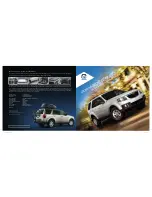
Additional Information About Your SRS
How the SRS Indicator Light
Works
The purpose of the SRS
light is to alert you to a
potential problem with your
Supplemental Restraint System.
When you turn the ignition ON (II),
this indicator will light up briefly
then go out. This tells you that the
system is working properly.
However, if the light comes on at any
other time, you should have the
system checked by your dealer. For
example:
If the SRS indicator light does not
come on after you turn the ignition
ON (II).
If the light stays on after the
engine starts.
If the light comes on or flashes on
and off while you drive.
If you see any of these indications,
your airbags may not deploy when
you need them. See your Honda
dealer as soon as possible.
SRS Service
Your Supplemental Restraint System
is virtually maintenance-free, and
there are no parts you can safely
service. However, you must have
your car serviced if:
Your airbags ever inflate.
The
airbags and the control unit must
be replaced. Do not try to remove
or replace the airbags yourself.
This must be done by a Honda
dealer or a knowledgeable body
shop.
The
SRS indicator light alerts you
to a problem.
Take your car to an
authorized Honda dealer as soon
as possible. If you ignore this
indication, the airbags might not
inflate when you need them.
Driver
and
Passenger Safety
SRS
Ignoring the SRS indicator light
can result in serious injury or
death if the airbags do not
inflate when needed.
Have your vehicle checked by a
dealer as soon as possible if
the SRS light alerts you to a
potential problem.
Содержание 2000 Civic Hatchback
Страница 7: ...4...
Страница 115: ...112...
Страница 131: ...128...
Страница 143: ...RequiredMaintenance Record for Normal and Severe Schedules Maintenance...
Страница 185: ...182...
Страница 211: ...Fuses INTERIOR FUSE BOX On Canadian models Taking Care of the Unexpected...
Страница 212: ...Fuses UNDER HOOD FUSE BOX Taking Care of the Unexpected...
Страница 215: ...212...
Страница 220: ...Specification s 1 Canadian DX model with automatic transmission Technical Information page 208 page 209...
















































